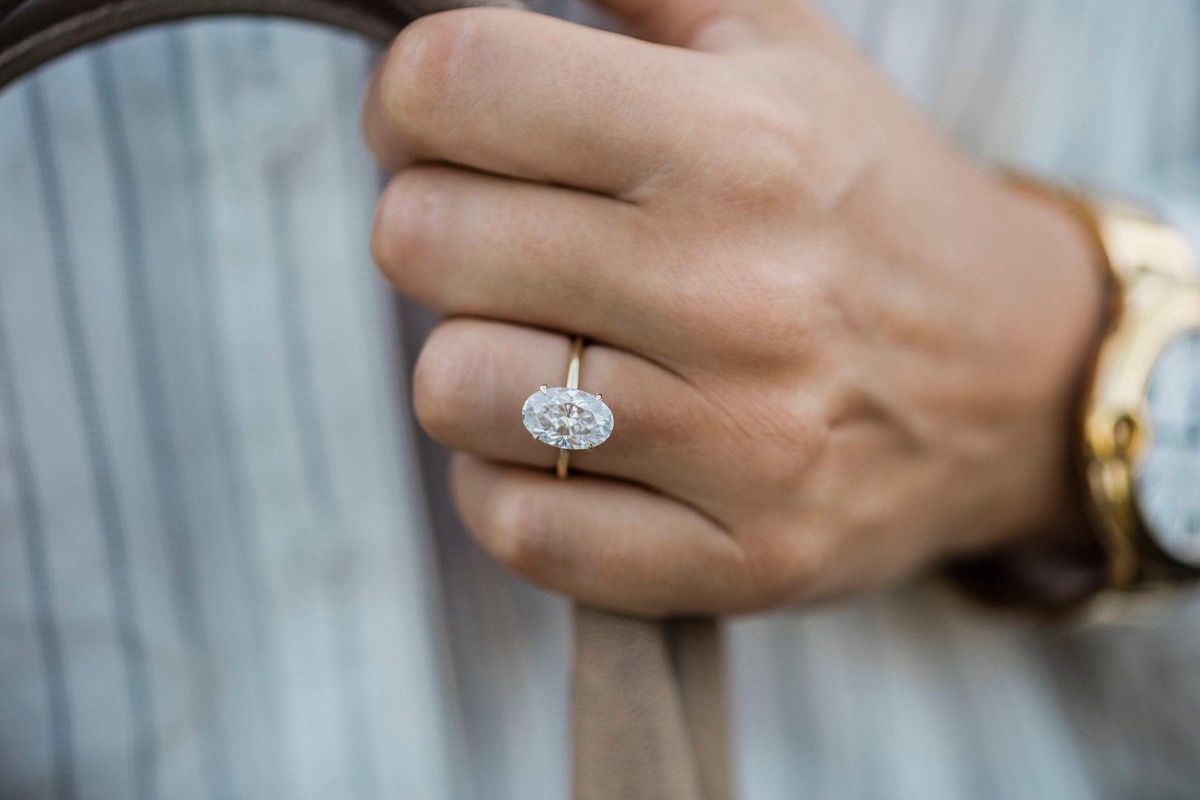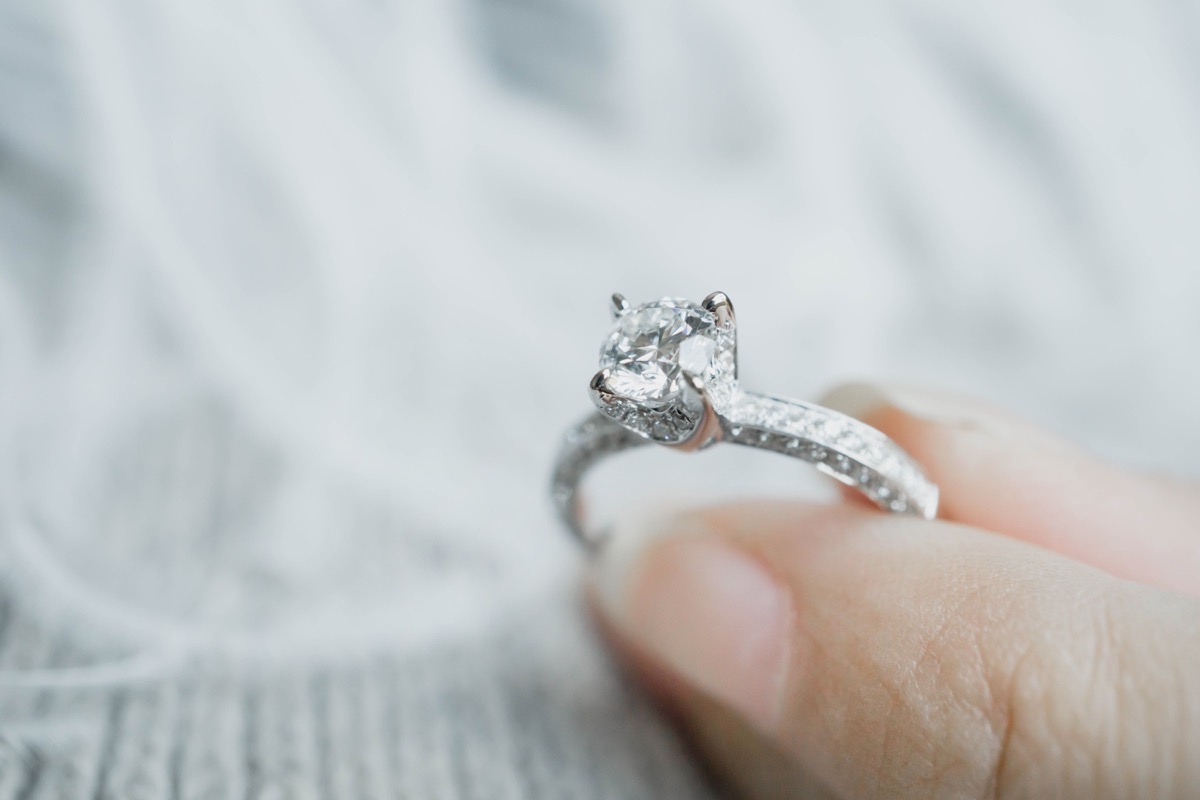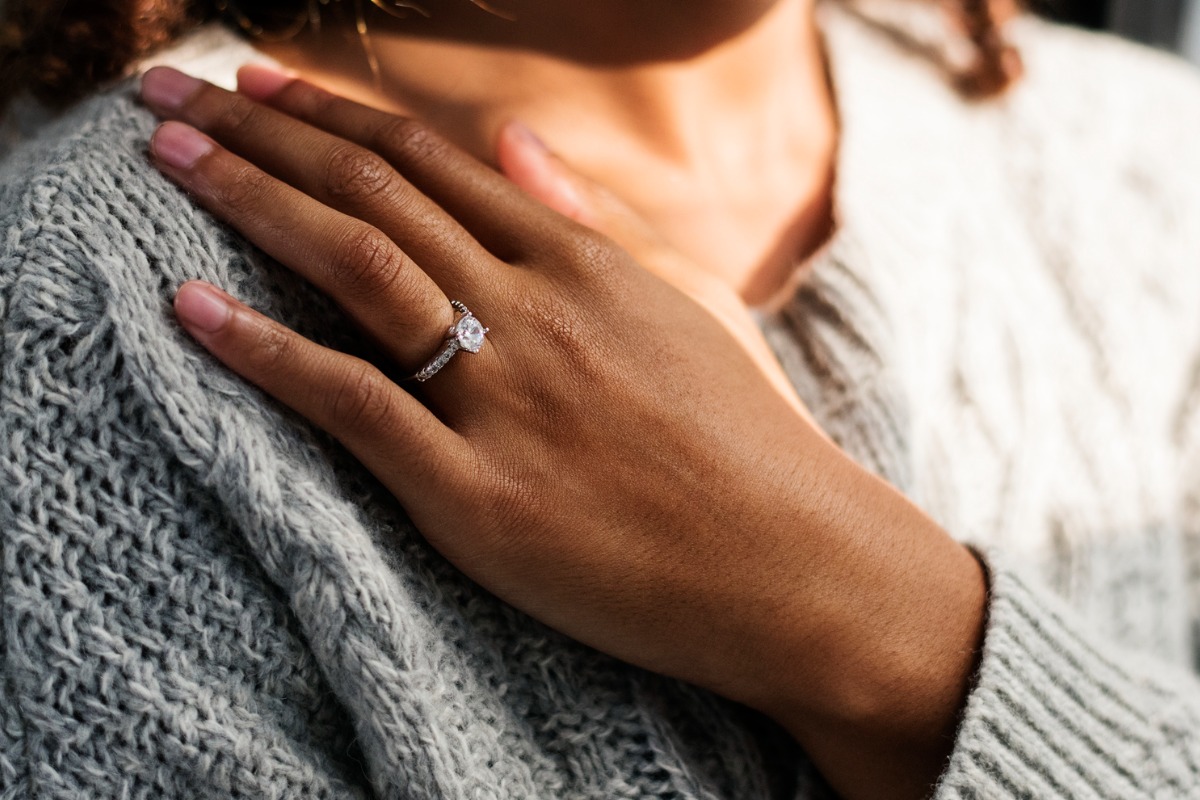
As you look at different engagement rings, there are many things to consider, from the color of the band to the shape of the diamond and its color, clarify, cut, and carat to your budget. But amid the excitement, it can become easy to get swept away in the magic of it all and make a decision you regret. To help prevent that, one jeweler took to TikTok to share the three engagement ring styles she never recommends. Purchasing them could be an expensive mistake you need to fix later.
RELATED: The 7 Luckiest Pieces of Jewelry You Can Wear, Experts Say.

When looking for an engagement ring, many people are drawn to a dainty, thin band. However, in a recent TikTok video, an engagement ring designer at the Bijou Lab said it’s one of the top ring types she’d avoid.
“While they’re really, really pretty, they are not durable at all,” she says. She then shows a picture of a ring with a thin band that has a stone that’s bent toward the wearer’s finger. “This is what can happen if your band is too thin, so we always recommend going at least 1.8 millimeters or more.”
In a follow-up video, the jeweler says that the band on her own engagement ring is 1.4 millimeters. “My husband purchased it eight years ago and didn’t know much about jewelry, so he just asked them for something that was popular and pretty,” she says. “I’ve had to bring my ring back to the goldsmith to be repaired three times now, once because the head bent and twice to hammer [the band] back into a circle because it had become an oblong shape.”
She goes on to say that many of her clients still prefer dainty rings and that it’s OK as long as they know that they have to wear them carefully and will likely have to get them repaired at some point.
RELATED: 8 Colors You Should Never Wear to a Wedding (And It’s Not Just White).


The second style the jeweler suggests avoiding is a ring with an open gallery, a type of ring where there’s nothing behind the diamond. Some people prefer this design because it allows people to see more of the stone, but this also means the stone goes right up against, or close to, your finger.
“The reason not to get these is that they can’t be resized, and a part of your stone is completely exposed and can get scratched easily by [other diamonds on] your wedding band,” she says. “I’ve also heard of people getting poked by the bottom of their stone when they’re bending their finger.”
RELATED: The Best Color to Wear With Your Birthstone, According to Stylists.


Finally, the jeweler advises against purchasing a ring without a gallery rail, which is the piece of metal that connects the two prongs on the stone. (If this piece has stones embedded into it, it’s also referred to as a hidden halo.)
“Without it, your prong can easily snag on something and pull right down, and your stone will fall out,” she says. Of course, that’s any wearer’s worst nightmare.
RELATED: 5 Wedding Guest Rules You Have to Follow—And 5 to Ignore.


A few people took to the comments to share their experiences with these three styles.
“I wish they told me not to do a thin band,” wrote one person. “I had to add another band and solder it when that wasn’t the plan.”
Another said they’re happy they opted for a thicker band. “When my hubby and I designed my rings, I was thinking a 1.5-2 mm band because I wanted it to be dainty, but we went with a 2.3, and it is so sturdy and still so dainty.”
One commenter said they’d lost stones due to not following the advice. “From someone who has no gallery wall and has lost three stones, believe homegirl, she’s here for you.”
Another jeweler agreed with the advice: “Yes!! Omg this is exactly what I tell my clients and I always let them know the risks of these settings.”



